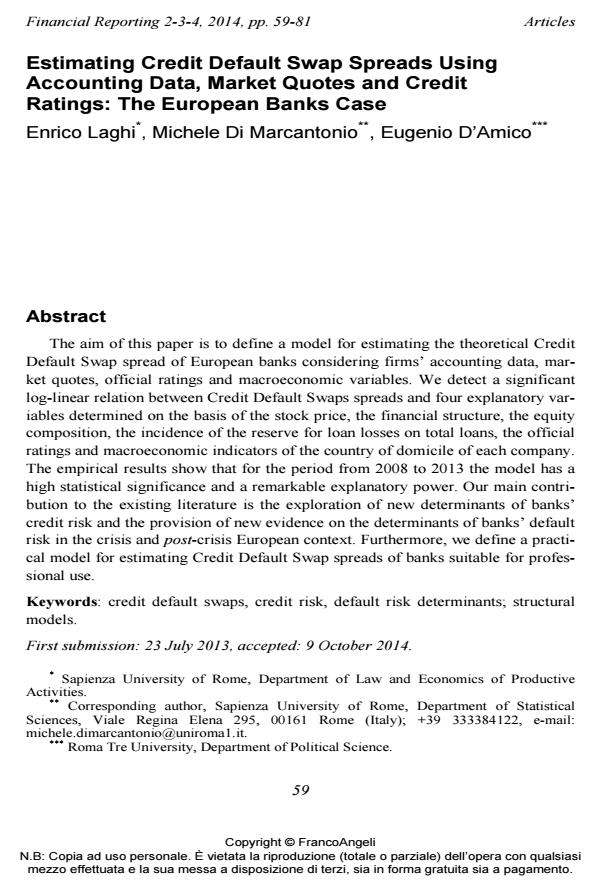Estimating credit default swap spreads using accounting data, market quotes and credit ratings: the European Banks Case
Journal title FINANCIAL REPORTING
Author/s Enrico Laghi, Michele Di Marcantonio, Eugenio D'Amico
Publishing Year 2015 Issue 2014/2-3-4
Language English Pages 23 P. 59-81 File size 309 KB
DOI 10.3280/FR2014-002003
DOI is like a bar code for intellectual property: to have more infomation
click here
Below, you can see the article first page
If you want to buy this article in PDF format, you can do it, following the instructions to buy download credits

FrancoAngeli is member of Publishers International Linking Association, Inc (PILA), a not-for-profit association which run the CrossRef service enabling links to and from online scholarly content.
The aim of this paper is to define a model for estimating the theoretical Credit Default Swap spread of European banks considering firms’ accounting data, market quotes, official ratings and macroeconomic variables. We detect a significant log-linear relation between Credit Default Swaps spreads and four explanatory variables determined on the basis of the stock price, the financial structure, the equity composition, the incidence of the reserve for loan losses on total loans, the official ratings and macroeconomic indicators of the country of domicile of each company. The empirical results show that for the period from 2008 to 2013 the model has a high statistical significance and a remarkable explanatory power. Our main contribution to the existing literature is the exploration of new determinants of banks’ credit risk and the provision of new evidence on the determinants of banks’ default risk in the crisis and post-crisis European context. Furthermore, we define a practical model for estimating Credit Default Swap spreads of banks suitable for professional use.
Keywords: Credit default swaps, credit risk, default risk determinants; structural models
- Income Smoothing via Loan Loss Provision in Credit Cooperative Banks Stefano Azzali, Luca Fornaciari, Tatiana Mazza, in FINANCIAL REPORTING 2/2017 pp.33
DOI: 10.3280/FR2016-002002
Enrico Laghi, Michele Di Marcantonio, Eugenio D'Amico, Estimating credit default swap spreads using accounting data, market quotes and credit ratings: the European Banks Case in "FINANCIAL REPORTING" 2-3-4/2014, pp 59-81, DOI: 10.3280/FR2014-002003